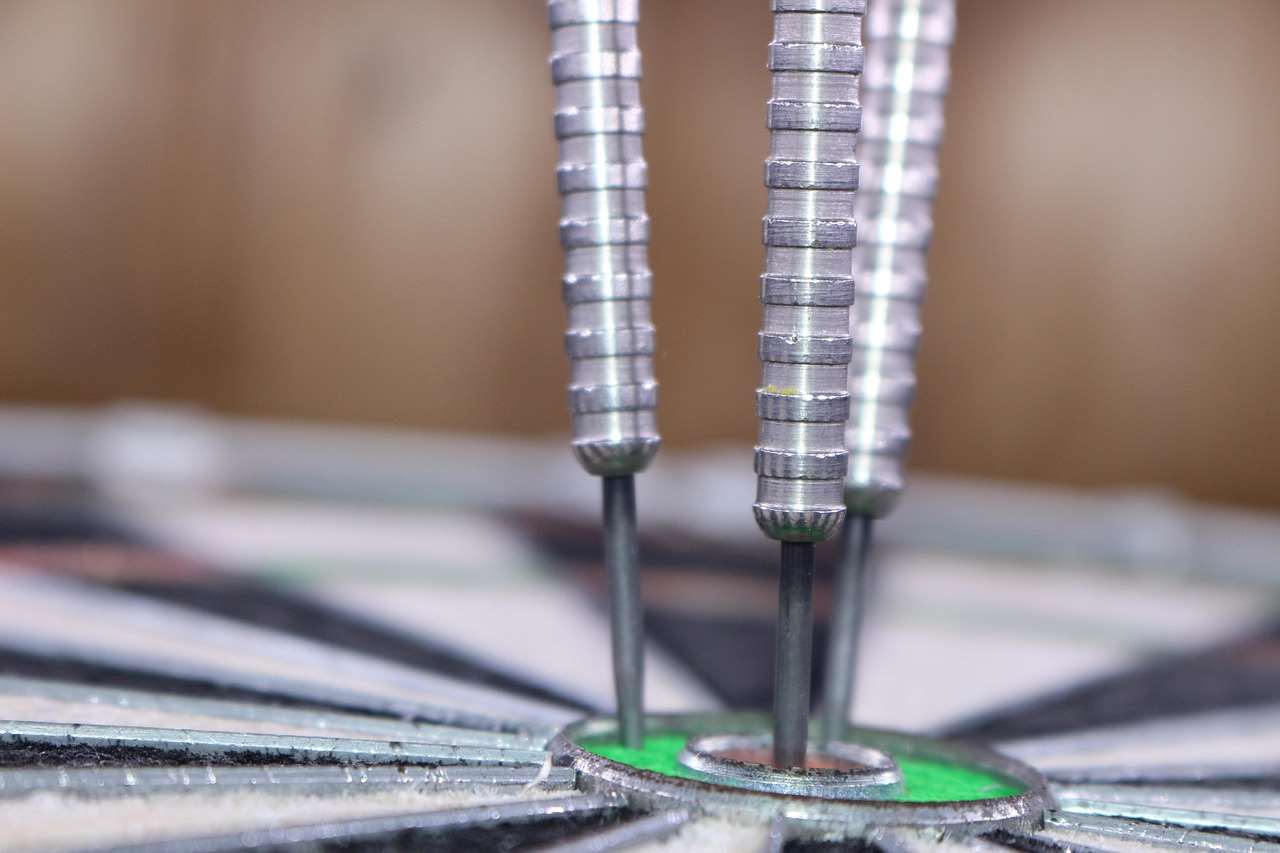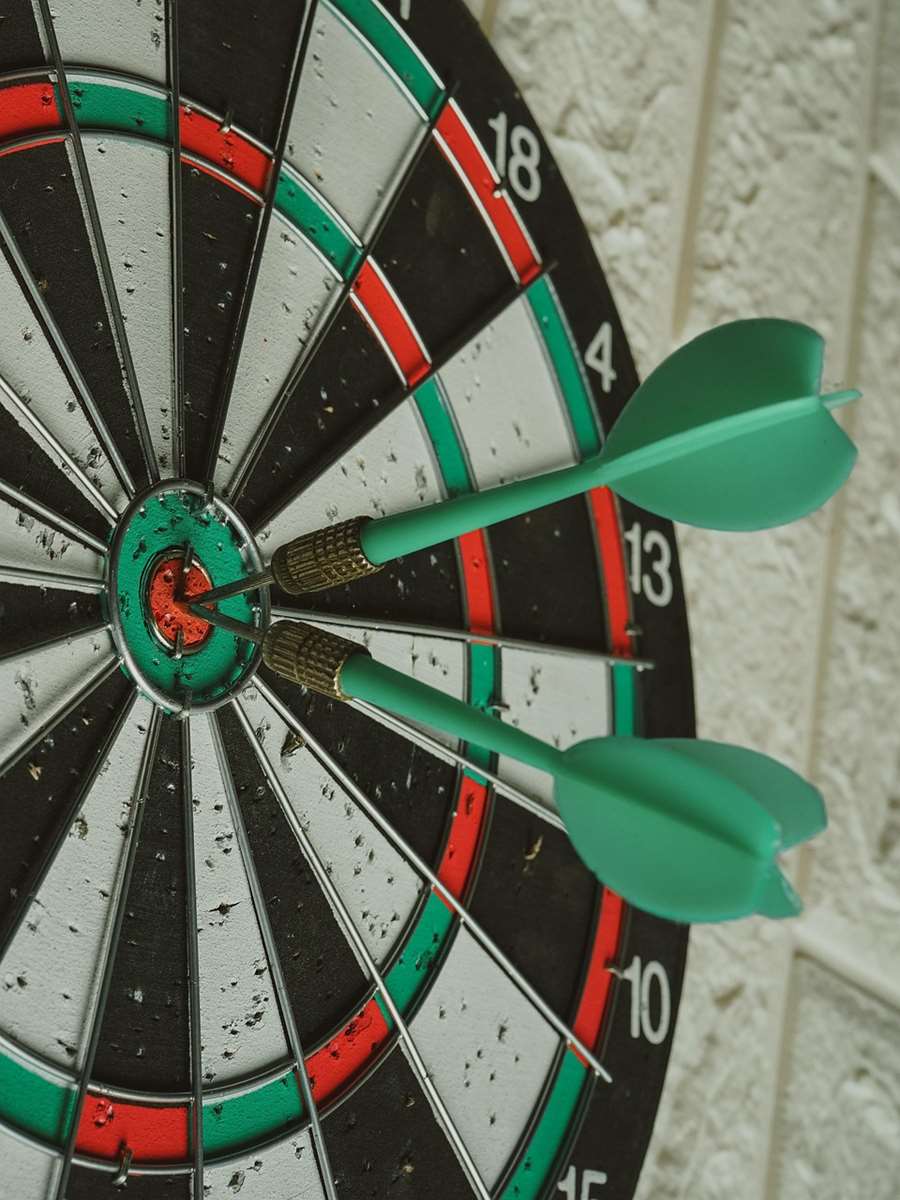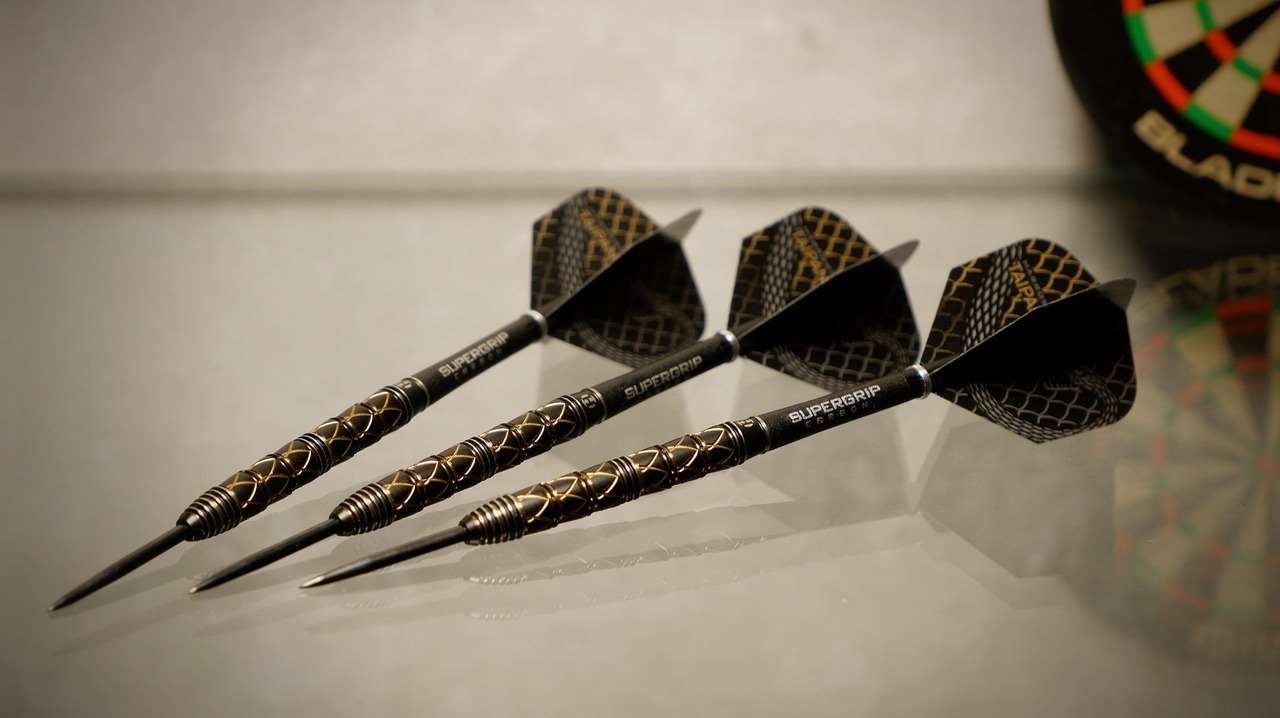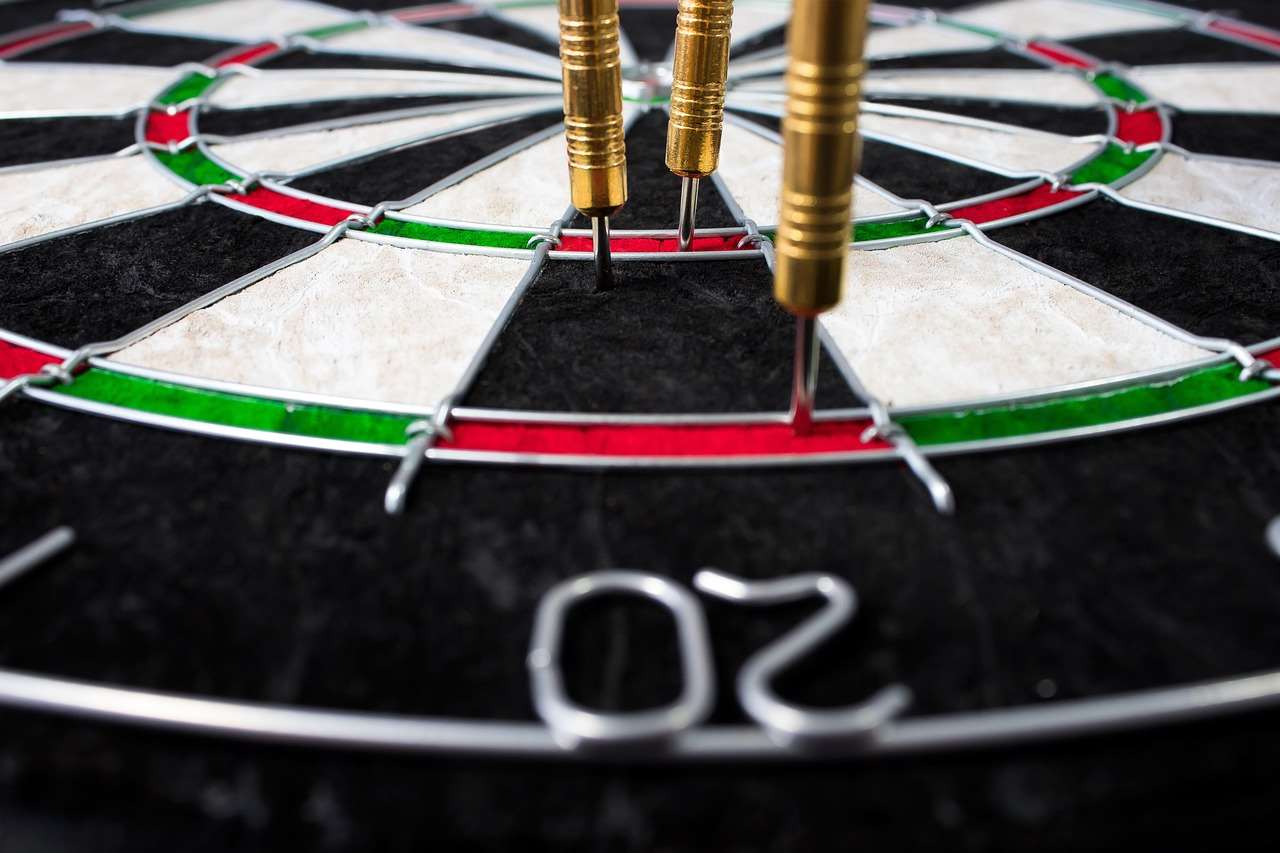Transform your darts practice by adapting rules for darts practice drills to suit your skill level and goals, focusing on specific areas needing improvement. This article explores a range of customized drills and rule modifications to enhance accuracy, consistency, and overall darting performance, including alternative scoring systems and tailored practice routines.
⚠️ Still Using Pen & Paper (or a Chalkboard)?! ⚠️
Step into the future! The Dart Counter App handles all the scoring, suggests checkouts, and tracks your stats automatically. It's easier than you think!
Try the Smart Dart Counter App FREE!Ready for an upgrade? Click above!
The Importance of Adapting Rules for Darts Practice Drills
Generic dart practice can become monotonous and yield limited results. The key to effective improvement lies in adapting rules for darts practice drills to address your specific weaknesses and reinforce your strengths. By modifying the standard rules and creating custom drills, you can target areas such as doubling, treble hitting, checkout accuracy, and mental fortitude. This personalized approach makes practice more engaging, challenging, and ultimately, more rewarding. You can even introduce fun dart game variations with modified rules to keep things interesting.

Consider this: a player struggling with doubles should dedicate a significant portion of their practice to doubling drills, perhaps even increasing the point value of doubles or implementing a penalty for missing them. Conversely, a player confident in their doubling ability might focus on improving their scoring in the open game, practicing high scores and checkout combinations. This targeted approach maximizes the efficiency of your practice sessions and accelerates your progress.
Tailoring Your Practice: Identifying Weaknesses and Strengths
Before diving into specific drills and rule modifications, it’s crucial to accurately assess your current darting abilities. This involves identifying both your strengths and weaknesses. Keep a practice log to track your scores, identify recurring misses, and note the areas where you consistently excel. Do you struggle with hitting treble 20? Are your doubles inconsistent? Is your scoring slow and inefficient? Knowing the answers to these questions is the first step towards adapting rules for darts practice drills that will truly benefit you. Understanding Basic Darts Fundamentals for Beginners is also crucial before adapting any rules.
Here are some methods for identifying your strengths and weaknesses:
- Record your scores: Track your average score per dart (SPD), your doubles hit percentage, and your treble hit percentage.
- Analyze your throws: Pay attention to your throwing motion, your stance, and your grip. Are there any inconsistencies that could be affecting your accuracy?
- Play against opponents: Playing against players of different skill levels can reveal areas where you need to improve.
- Use dart analysis software: Several software programs can track your stats and provide detailed insights into your performance.

Setting Realistic Goals Based on Assessment
Once you’ve identified your strengths and weaknesses, it’s time to set realistic goals. These goals should be specific, measurable, achievable, relevant, and time-bound (SMART). For example, instead of setting a goal to “improve your doubles,” set a goal to “increase your doubles hit percentage from 20% to 30% in the next month.” This provides a clear target and allows you to track your progress effectively. Also keep in mind that adapting darts rules for beginners differs from doing so for advanced players.
Examples of Adapting Rules for Darts Practice Drills
Now, let’s explore some specific examples of how you can adapting rules for darts practice drills to target different areas of your game:
Doubling Drills with Modified Rules
Doubling is often the most challenging aspect of darts. Here are some drills to improve your doubling accuracy:
- Around the Clock Doubles: Start at double 1 and work your way around the board to double 20, then the bullseye. Modify the rule by requiring you to hit each double three times before moving on. If you miss three times in a row, you go back to the previous double.
- High-Pressure Doubles: Set a target score, such as 40. You must finish the game on a double. If you miss the double, your score resets to 40. This simulates the pressure of a real game.
- Doubles Only Game: Play a game where only doubles count. This forces you to focus solely on hitting doubles.
Treble-Focused Practice with Rule Variations
Hitting trebles consistently is crucial for high scoring. Try these drills:
- Treble 20 Challenge: Throw at treble 20 until you hit it five times in a row. If you miss, start over. Gradually increase the number of consecutive hits required.
- Treble or Nothing: Throw three darts. If you hit at least one treble, you get to keep the score. If you miss all three, you score nothing for that round. This encourages aiming for trebles even when not specifically targeting treble 20.
- Treble Around the World: Like “Around the Clock Doubles,” but for trebles. This helps you get comfortable hitting different trebles on the board.
Checkout Practice with Custom Scoring Systems
Checkout accuracy is essential for winning games. These drills can help you improve your finishing skills:
- Standard Checkouts: Practice common checkouts such as 40 (D20), 32 (D16), and 81 (T17, D15).
- Unusual Checkouts: Practice less common checkouts such as 121 (T20, T19, D2), or 97 (T19, D20). This forces you to think outside the box and develop a wider range of checkout options.
- Checkout Roulette: Write down all possible checkouts from 170 down to 2. Randomly select a checkout number. You have three darts to checkout that number. If you fail, select another checkout.
Beyond the Board: Mental Fortitude and Practice Rules
Dart is as much a mental game as it is a physical one. Adapting rules for darts practice drills can also include mental exercises designed to improve focus, concentration, and resilience under pressure. One simple adaptation is to impose consequences for negative self-talk. For example, if you say something negative about your throw, you must immediately perform a less desirable practice drill. This helps you become more aware of your thoughts and encourages a more positive mindset.
You may want to even consider modifying rules for mixed-level dart players even when practicing solo, as it can help with visualization and mental preparation.

Simulating Game Pressure in Practice
To prepare for the pressure of real games, incorporate elements of competition into your practice sessions. You can do this by:
- Playing against yourself: Set a target score and try to beat it.
- Playing against friends or family: Even casual games can help you get used to playing under pressure.
- Joining a dart league or tournament: This is the best way to experience the real pressure of competitive darts.
Tracking Progress and Adjusting Your Approach
Adapting rules for darts practice drills is an ongoing process. It’s crucial to track your progress and adjust your approach as needed. Keep a practice log, monitor your stats, and regularly reassess your strengths and weaknesses. If a particular drill isn’t working, don’t be afraid to modify it or try something new. The key is to stay flexible and adaptable, and to constantly look for ways to improve your game.
If you feel like you are losing interest, try creative dart rules for parties and social gatherings just to change things up.
Regularly Evaluating Your Drill Modifications
Set aside time each week to review your practice data and evaluate the effectiveness of your rule modifications. Are you seeing improvement in the areas you’re targeting? If not, consider making further adjustments to your drills or focusing on different aspects of your game. Remember, there’s no one-size-fits-all approach to dart practice. What works for one player may not work for another. The key is to experiment and find what works best for you.

Conclusion
Adapting rules for darts practice drills is a powerful way to personalize your training, target specific weaknesses, and accelerate your progress. By identifying your strengths and weaknesses, setting realistic goals, and experimenting with different drill modifications, you can create a practice routine that is both effective and engaging. Remember to track your progress, adjust your approach as needed, and never stop learning. With dedication and a tailored approach, you can unlock your full darting potential. Take the first step today and begin implementing customized practice drills to elevate your game to the next level. Start adapting rules for darts practice drills today!
Hi, I’m Dieter, and I created Dartcounter (Dartcounterapp.com). My motivation wasn’t being a darts expert – quite the opposite! When I first started playing, I loved the game but found keeping accurate scores and tracking stats difficult and distracting.
I figured I couldn’t be the only one struggling with this. So, I decided to build a solution: an easy-to-use application that everyone, no matter their experience level, could use to manage scoring effortlessly.
My goal for Dartcounter was simple: let the app handle the numbers – the scoring, the averages, the stats, even checkout suggestions – so players could focus purely on their throw and enjoying the game. It began as a way to solve my own beginner’s problem, and I’m thrilled it has grown into a helpful tool for the wider darts community.